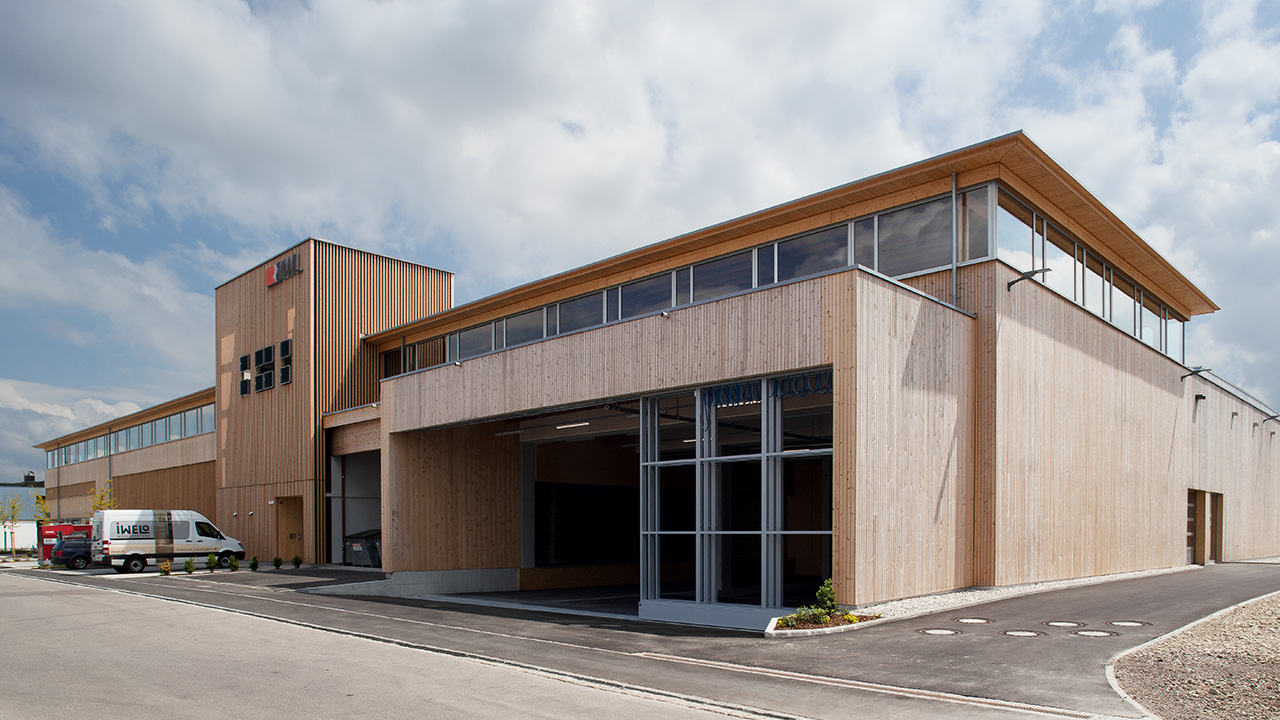Apolda, Germany
Eiermannbau
about
The Eiermannbau stands for an exemplary approach in the reuse and transformation of a listed historic buildings. The industrial monument is currently being transformed into a The Eiermannbau stands for an extraordinary approach in the reuse and transformation of a listed historic building. The industrial monument is currently being transformed into a place that demonstrates in numerous facets how resource-conscious redevelopment and participatory reuse concepts can be implemented. With careful interventions that do not compete with the existing structure, the industrial halls are being made usable again in various ways. The requirements for dealing with a listed building call for creative solutions and new concepts of using the space. For sustainable and economic reasons, the interventions will be carried out in a way that protects resources and is largely reversible. The minimal new technical services will be installed visibly to enable easy removal in the future and to emphasize the difference between old and new. Innovative concepts are being developed and tested within the existing industrial monument as part of the IBA Thüringen together with different actors such as students, which encourages people to rethink conventional planning and usage structures. One example of these creative utilization concepts is the office space of the IBA team: commercially available greenhouses converted into „individual offices“, each with its own microclimate. Completely reversible, these can be used again at other locations in the future, freeing up the hall in the Eiermannbau for new projects. The Eiermannbau in Apolda is an example of a conscious, regenerative and careful approach to existing structures and listed buildings.s.
General
Architects:
Hermann Schneider (1906/07), Egon Eiermann (1938/39), planning team commissioned by GESA (2010/11), planning team commissioned by IBA Thüringen (2018/22-23)
Specalist Planners:
Hertha Hammerbacher (landscape architecture) and others
Location:
Auenstraße 11, 99510 Apolda
Year Of Completion:
1907
INTERVENTIONS:
1938/39: extension, addition of storeys and conversion, 2010/11: renovation, 2018/22-23: renovation and transformation
Storeys:
5
Surface (m²):
6.294 (only Eiermannbau without extension)
Legal Status:
public, owned by a national company
Use:
former weaving mill, today prototypical mixed use
Typology:
freestanding
Awards:
Nomination DAM Preis 2020, AIT-Award 2020/Auszeichnung Büro-Verwaltung, Immobilienmanager-Award 2021 - Kategorie Projektentwicklung Bestand
CONCEPT & Context
innovation:
user-open redevelopment and reversible interventions with renewable raw materials
spacial configuration:
innovative low tech conversion concepts are established within the existing industrial halls
infrastructure + accessibility:
(semi)-public spaces available for (temporary) rent to various user groups
landscape:
rurban
CONSTRUCTION
construction:
ferro concrete skeleton
envelope:
concrete - brick - steel
material extraction:
industrial greenhouses
embodied carbon (CO₂ in t):
1.000 t CO₂ aquivalent (value for building stock until 1939)
special detail:
minimal intervention in the existing substance through consistent surface-mounted installation of new technology
operation
heating system:
radiant ceiling panels and infrared radiators
cooling system:
no cooling system
energetic demand (kWh/(m²a):
147 (energetic demand, projection of full capacity Eiermannbau)
sun protection:
interior sun protection for reasons of historical preservation of the facade
ventilation System:
free ventilation
project map

Project Dossier
Download the project dossier as pdf in Din-A4 format. The pdf dossiers are available in english.
.png)
.png)
.png)
.png)
.png)
.png)
.png)


















